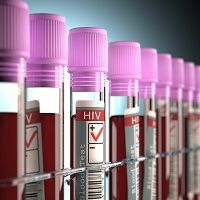Another Reason That People with HIV Need to Start ART Immediately
Although the human immunodeficiency virus (HIV) isn’t a death sentence like it was once considered, disease-related infections can be life-threatening.

Although the human immunodeficiency virus (HIV) isn’t a death sentence like it was once considered, disease-related infections can be life-threatening.
People with HIV should begin antiretroviral therapy (ART) as soon as possible after their diagnosis — regardless of infection stage. Two new analyses from the World Health Organization (WHO) confirm that, in addition to slowing disease progression, the treatment helps prevent potentially deadly infections. The studies included more than 20 years of data from Africa, Asia, and Latin America.
“There have been previous estimates on the impact of ART in reducing deaths and new HIV infections, but not on its impact on each of the serious infections to which people with HIV are vulnerable, especially in low-income settings,” Philippa Easterbrook, MD, from WHO’s HIV Department, said in a news release.
The first review consisted of nearly 500,000 patients from 126 studies. About 5% of these patients with HIV had oral infections, such as tuberculosis, shingles, oral thrush, and bacterial pneumonia. The risk of infection decreased by 57% to 91% with the use of ART — with the greatest reduction being in the first year.
- Related: One Step Closer to an HIV Vaccine
“Knowing how common these infections are is really important for planning HIV health services in these countries, including procuring drugs and diagnostic tests,” Easterbrook continued.
In the second review, the most common infections were similar to those seen in the first study — bacterial pneumonia and tuberculosis. Out of the 55,679 children with HIV collected from 88 studies, 25% had one of the infections before starting ART. Adult studies showed significant risk reductions for all infections, but especially (more than 80% risk reduction) for HIV-related diarrhea, cerebral toxoplasmosis, and tuberculosis.
While there is a considerable higher amount of data on adults with HIV, the reviews show that ART helps reduce infections in children as well.
“These findings demonstrate that ART has the same effect in reducing the risk of serious HIV-related infections in adults and children — thus, further explaining the reduction in death rates,” explained Gottfried Hirnschall, MD, director of WHO’s HIV Department. “This reinforces the need to continually prioritize the expansion of access to ART.”
Also on MD Magazine >>> Early HIV Infection Commonly Yields Neurologic Problems